

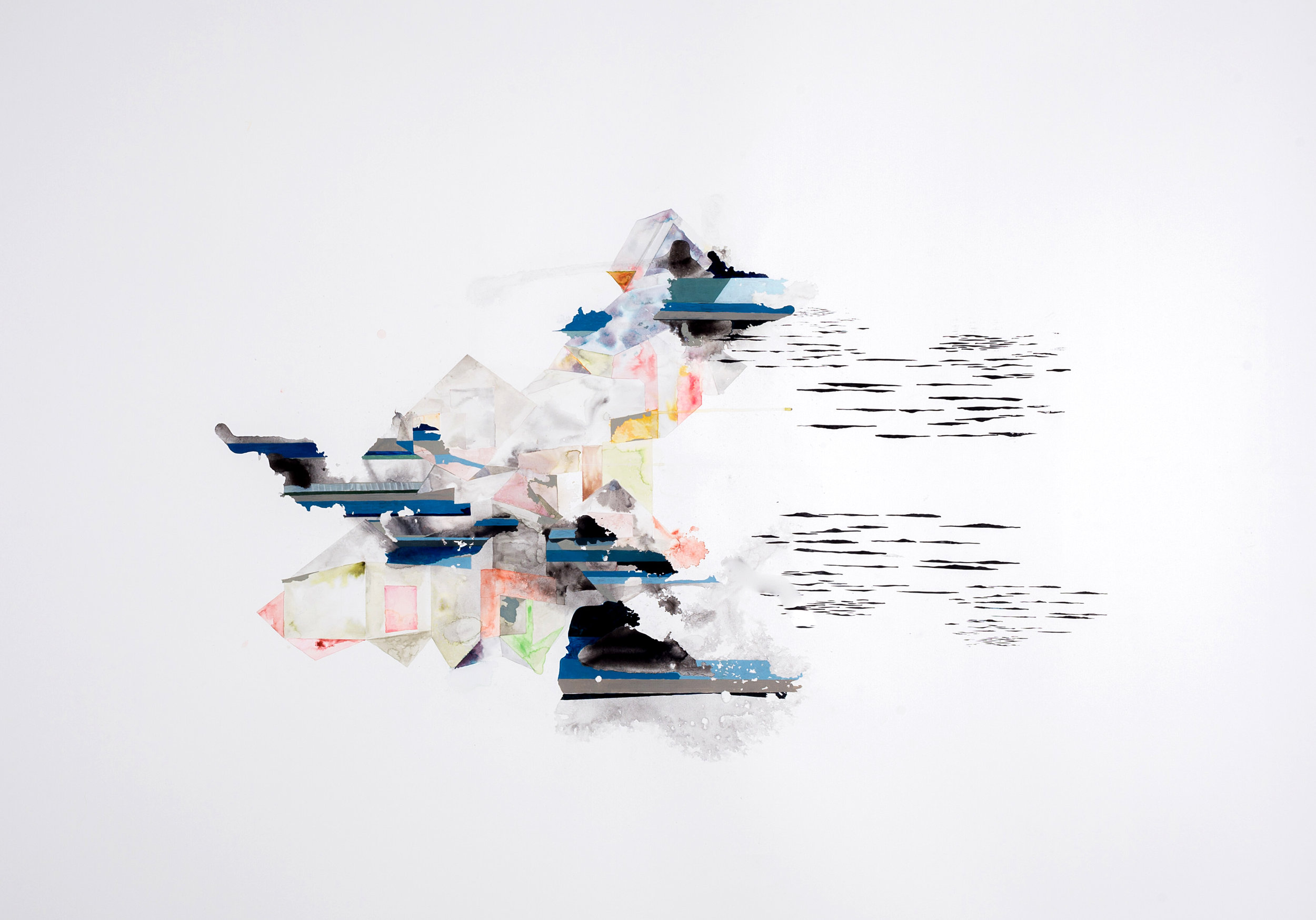





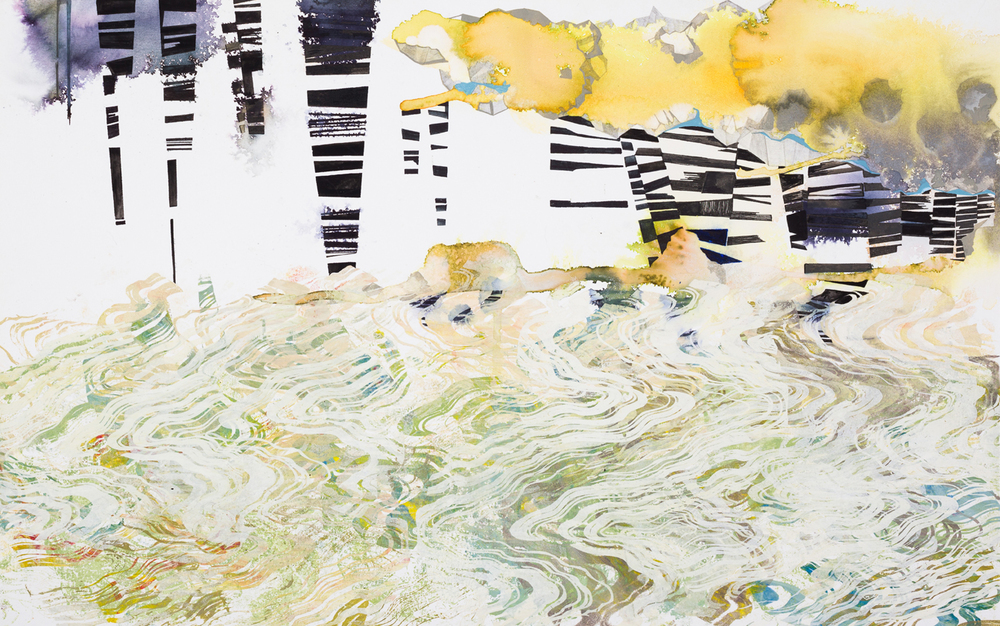
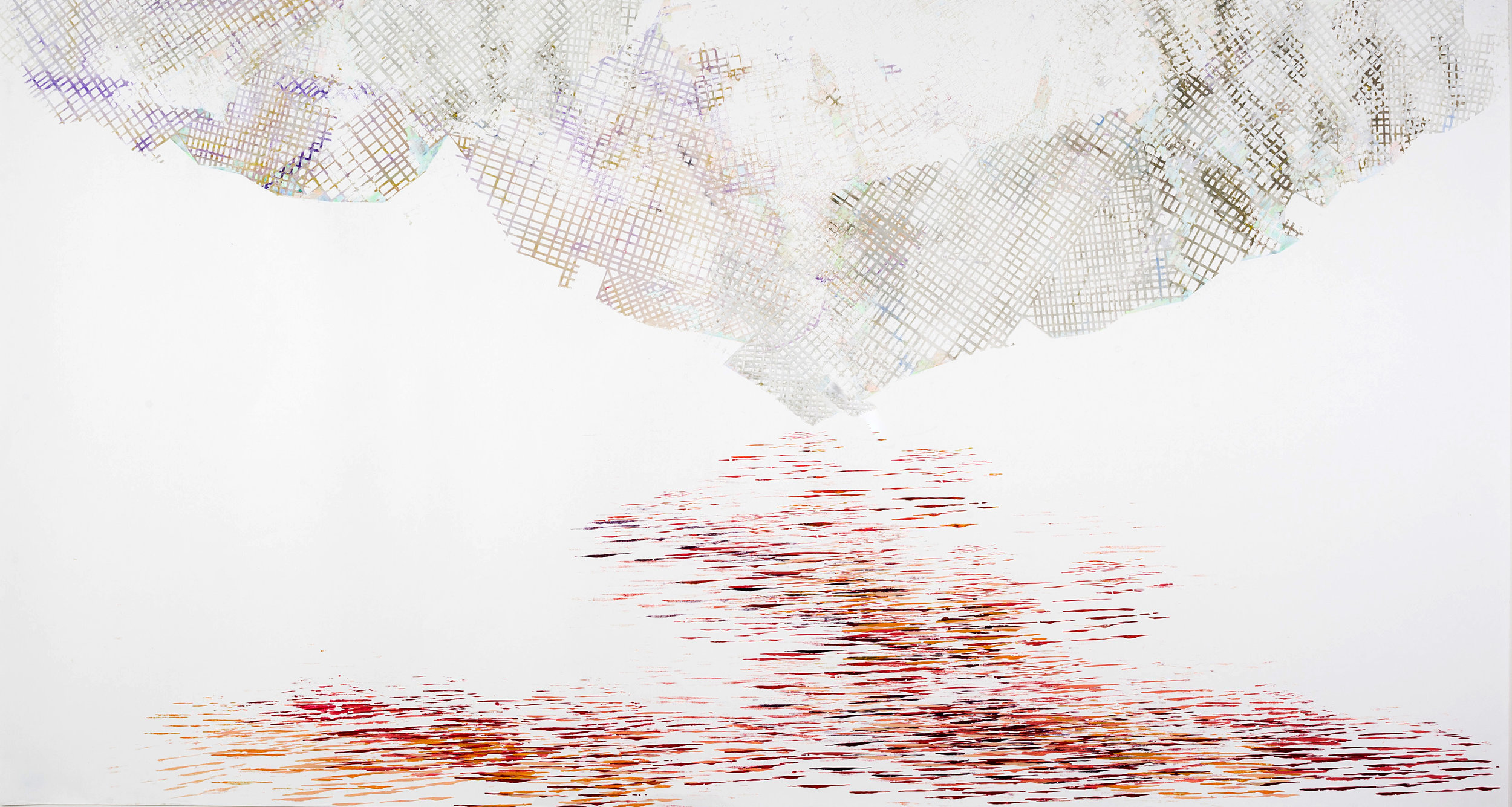


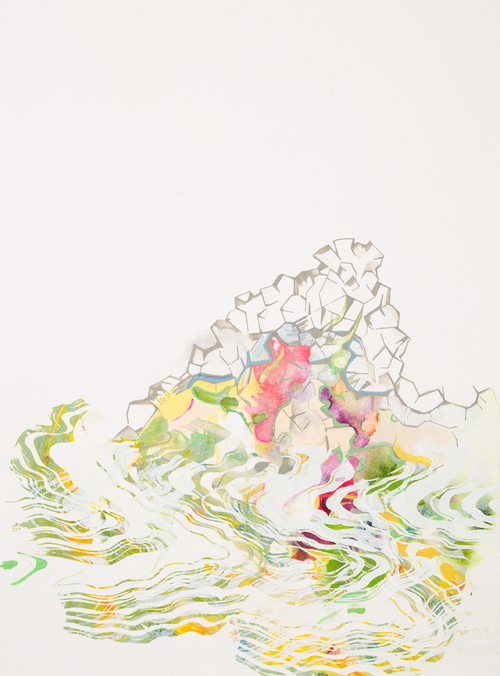

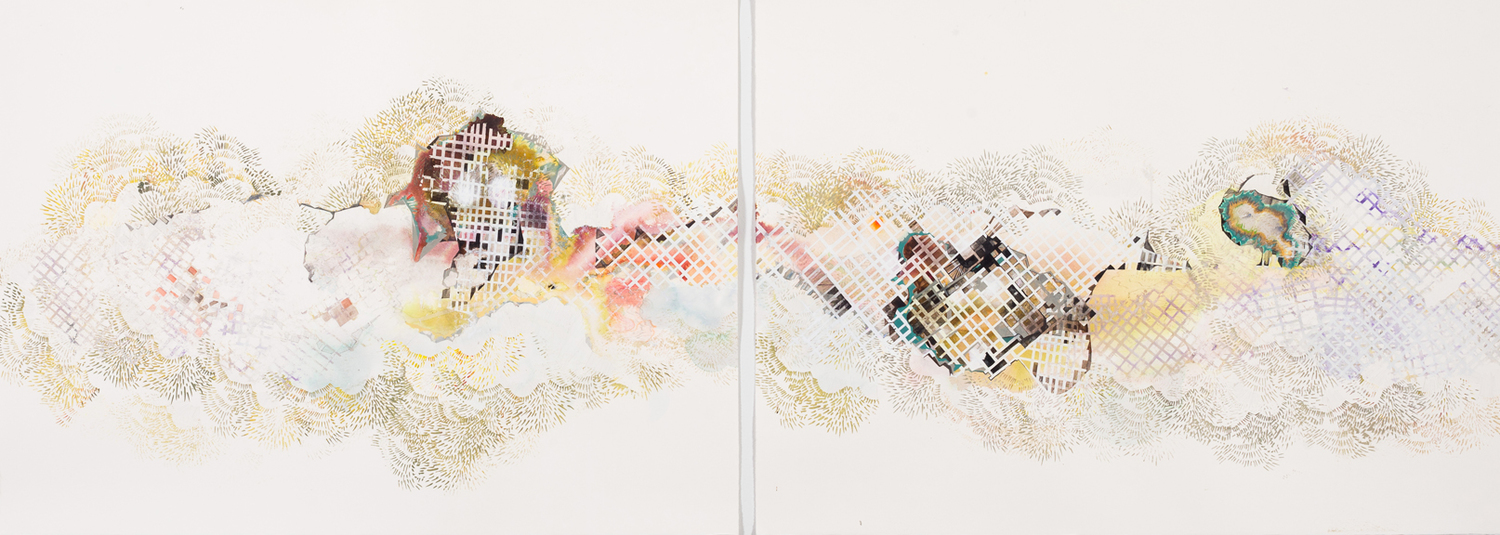
Your Custom Text Here
In the multi-year project, Shifting Shorelines, Hughen/Starkweather investigate places where water meets land, and the complex human, environmental, and historical factors that shape these areas. Similar to early cartographers dependent on inconsistent tools and word-of-mouth information from fellow travelers, the artists follow a meandering trail of data, images, maps, and oral histories. The resulting drawings and paintings reinterpret the complex narratives of landscape, creating new and unexpected forms through which to view a place, its history, and its possible futures.
Before beginning the artworks, the artists research scientific data, current and historical maps and photographs, and conduct personal interviews with community members including local residents, cartographers, fishermen, farmers, poets, marine biologists, educators, environmentalists, botanists, historians, geologists and storytellers. In the resulting abstract artworks, the artists include hints of the source materials, including recognizable landforms, topographies, data systems, and built structures. The artworks compress past and future, hard data and soft voices. The artworks do not offer solutions, but hope to prompt new perspectives on the difficult topic of climate change.
A brief summary of how we work can be seen here in a 3 minute video that was made for an installation on climate and the Anthropocene at the recent Venice Architectural Biennale. Additional information about our process can be found here.
Works from this series have been shown at the Public Policy Institute of California; University of California, Berkeley; University of San Francisco; and the Bolinas Museum, among other places. Additional works from this series can be seen elsewhere on this site.
Hughen/Starkweather is comprised of San Francisco artists Jennifer Starkweather and Amanda Hughen. Their work explores the layers, complexities, built systems, and natural movements of specific locations. They begin by researching a place using historic and current maps, data, photos, and personal interviews. The resulting artworks are abstract, but contain visible traces of the source materials, revealing forms unique to the location.
In the multi-year project, Shifting Shorelines, Hughen/Starkweather investigate places where water meets land, and the complex human, environmental, and historical factors that shape these areas. Similar to early cartographers dependent on inconsistent tools and word-of-mouth information from fellow travelers, the artists follow a meandering trail of data, images, maps, and oral histories. The resulting drawings and paintings reinterpret the complex narratives of landscape, creating new and unexpected forms through which to view a place, its history, and its possible futures.
Before beginning the artworks, the artists research scientific data, current and historical maps and photographs, and conduct personal interviews with community members including local residents, cartographers, fishermen, farmers, poets, marine biologists, educators, environmentalists, botanists, historians, geologists and storytellers. In the resulting abstract artworks, the artists include hints of the source materials, including recognizable landforms, topographies, data systems, and built structures. The artworks compress past and future, hard data and soft voices. The artworks do not offer solutions, but hope to prompt new perspectives on the difficult topic of climate change.
A brief summary of how we work can be seen here in a 3 minute video that was made for an installation on climate and the Anthropocene at the recent Venice Architectural Biennale. Additional information about our process can be found here.
Works from this series have been shown at the Public Policy Institute of California; University of California, Berkeley; University of San Francisco; and the Bolinas Museum, among other places. Additional works from this series can be seen elsewhere on this site.
Hughen/Starkweather is comprised of San Francisco artists Jennifer Starkweather and Amanda Hughen. Their work explores the layers, complexities, built systems, and natural movements of specific locations. They begin by researching a place using historic and current maps, data, photos, and personal interviews. The resulting artworks are abstract, but contain visible traces of the source materials, revealing forms unique to the location.
Armored Against Hazards, ink, pencil and gouache on wood panel, 16x16x1.5 inches, 2017
Incineration, ink and acrylic paint on paper, 10w x 8.25h in., 2017
High Tide Mark , Ink, gouache, acrylic paint on paper, 42 x 53.5 in., 2017
Hughen/Starkweather interview Mark Mir, archivist, and Antoni Ucerler, historian, at the Ricci Institute map library, as part of research for Shifting Shorelines
Hybrid, Ink and pencil on paper, 42 x 44.5 inches, 2017
Erode, Ink and pencil on paper, 40 x 60 inches, 2017
Hughen/Starkweather, Ocean Beach (Dean Rader), 34x30”, ink, pencil, and gouache on paper, 2015
Narrow Channel, Ink, pencil, and gouache on paper, 42 x 70 inches, 2017
Hughen/Starkweather, Brackish (from Shifting Shorelines), ink, gouache, and pencil on paper, 14 x 22 in., 2015
Nuisance Flooding, ink and pencil on paper, 42x75 inches, 2017
Hughen/Starkweather, Surge (from Shifting Shorelines), ink, gouache, and pencil on paper, 25x25 in., 2015
Hughen/Starkweather, Poipu (Mark Mir), 32.25x29.25”, acrylic paint, ink, and gouache on paper, 2016
Hughen/Starkweather, Seawall (from Shifting Shorelines), ink, gouache, and pencil on paper, 16x14 in., 2015
Adapt, Retreat, Defend, Abandon, Acrylic paint, ink, and gouache on paper, 41.25 x 72 in., 2017
Hughen/Starkweather, Subject to Reclamation (from Shifting Shorelines), Ink, gouache, and pencil on paper, 22x60 in (diptych), 2015